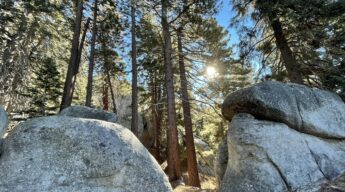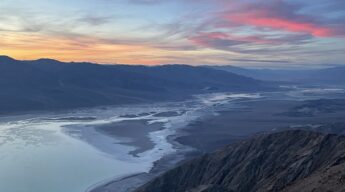Camping alone is an underrated experience. It’s humbling. And beautiful. But it can be daunting for someone who has never camped alone. Luckily, I’ve camped solo many times and in many places. And I have made all the mistakes you possibly can, and learned from them. Here a guide on how to prepare for, and enjoy, a solo camping trip on public lands.
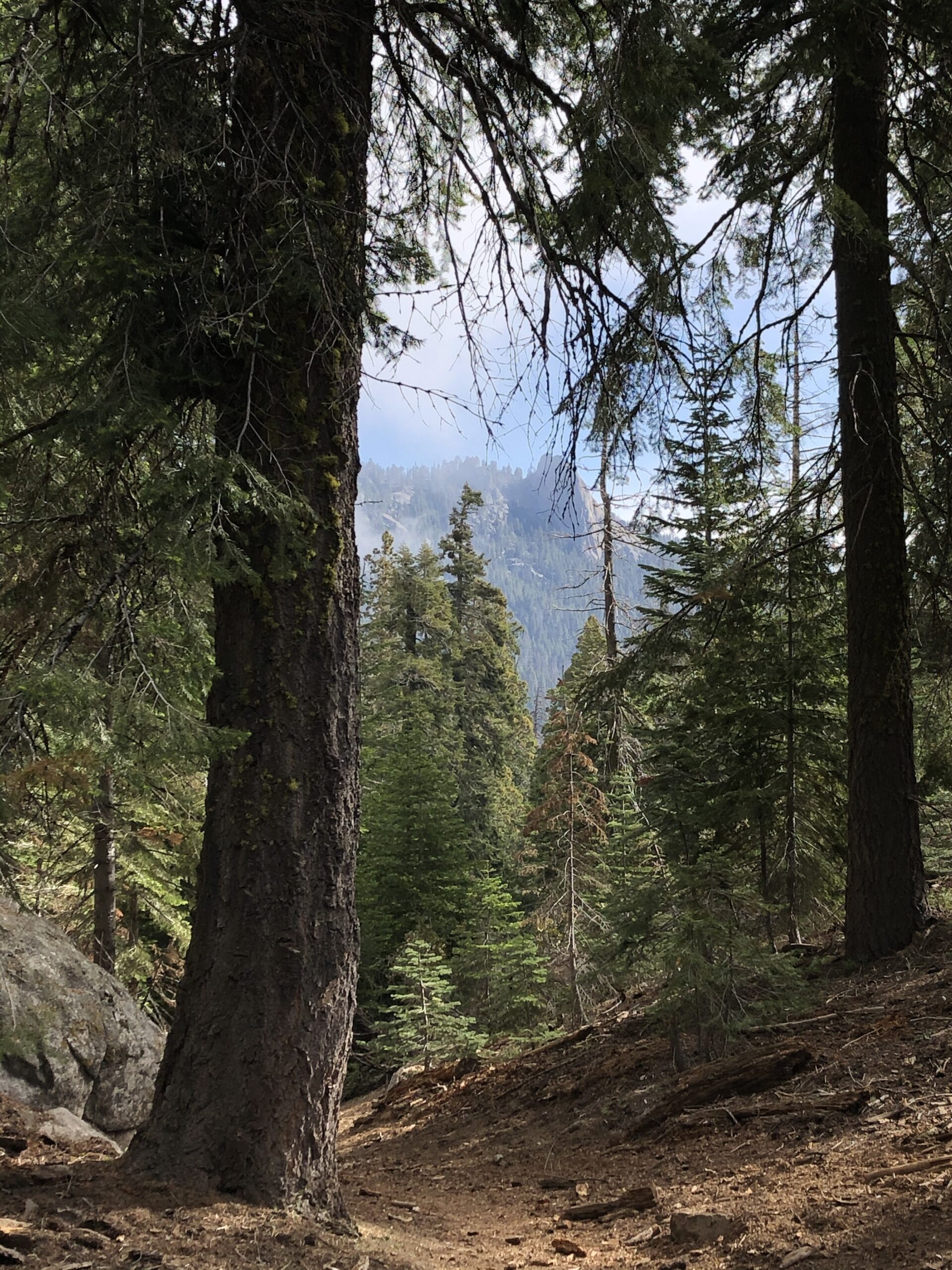
Why You Should Try To Camp Alone
Camping alone the first time is scary. And it still is a little bit almost any other time you camp alone. There is a major sense of vulnerability. But eventually, the wilderness begins to feel comfortable. A little familiar. You realize it’s better to embrace the vulnerability rather than just tense up and panic. Whether you’re at a campground, down a forest service road with your car, or on a solo backpacking trip, you’ll have a lot of time to yourself. To just “think.” Be in your own head. Only the sounds of nature and the wildlife around you. The best thing to do is embrace it. You are the only person you will actually be with for your entire life. Better get cozy with your thoughts and feelings. Being alone and in nature can help you embrace some fears. Test your wits. Learn to be bored. Build your confidence and get out of your comfort zone. And help you maintain calm in potentially stressful situations. It’s good to be connected to nature. Not just in an ethereal sense, but in a practical sense. Learning how to deal with inclement weather. How to stay warm. Identify plants and wildlife.
The benefits of solo camping go beyond just introspection and self reflection. You can also go completely at your own pace. See the trails and sites you wish to see. You have less opinions and external factors to consider in your decisions. This is a great opportunity to hone your camping skills as well. Practice compass and map reading, fire making, or any other number of outdoor skills. Or read a good book. Journal for a while. It’s a good time to practice being resourceful.
It’s understandable that camping may not be everyone’s jam. And that’s just fine. But should you endeavor to camp alone, it’s like anything worth doing. It takes some work. But it’s good work. And you decide if it’s a good time or not. At the end, it might not be your thing. But at the very least you can share a good story and say you had a good time (hopefully).
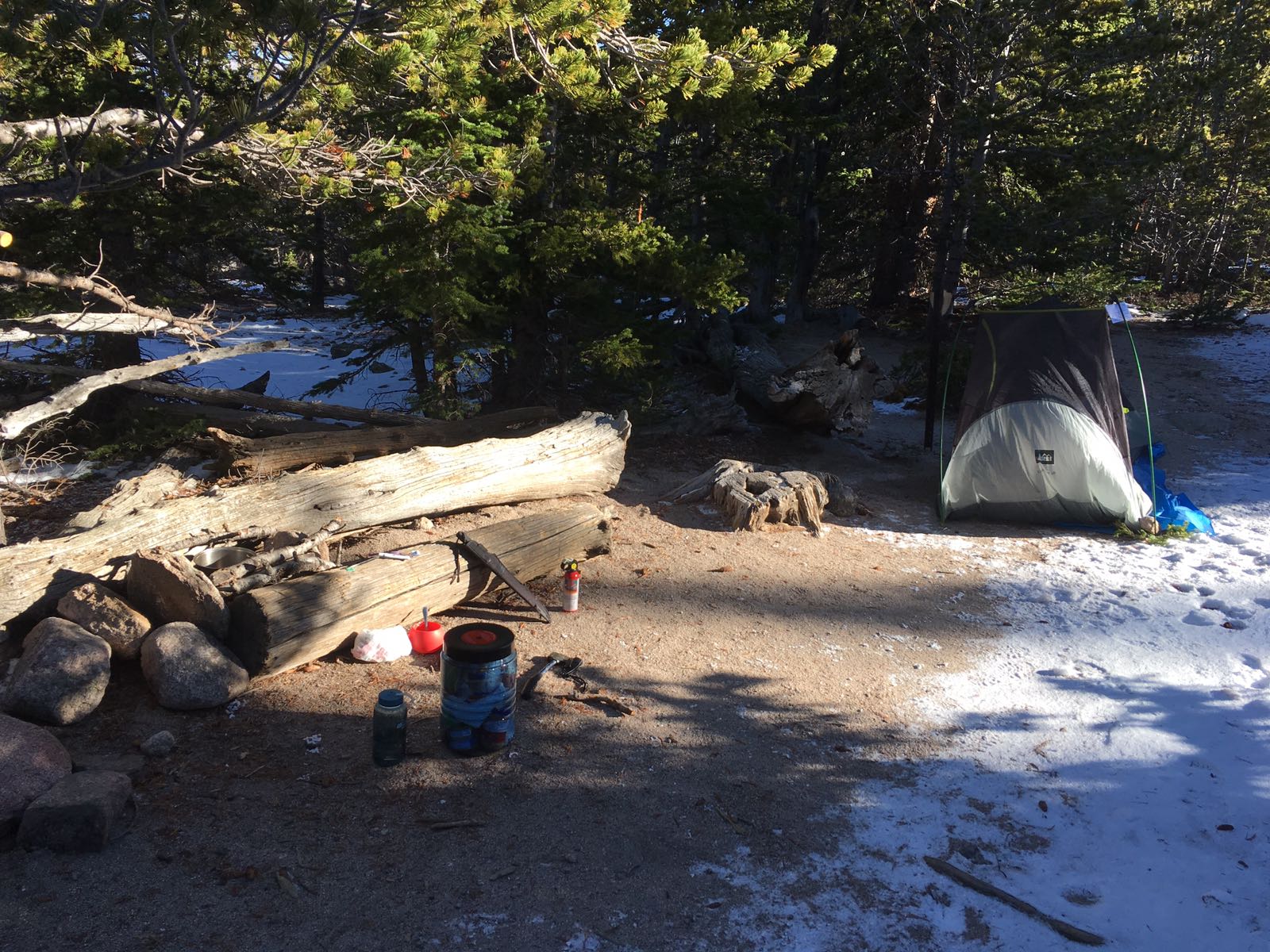
Who Should Camp Alone?
If you’re able, I think everyone should camp alone at least once. But I would advise a few things to those who have never camped alone before, or who have very little camping experience.
If you’re new to camping alone: Go easy the first time. It’s not rocket science, but do not overestimate your camping skills. If you are not familiar with setting up your tent, footprint, rainfly, or getting a fire going, or how to properly set up a sleeping area that’s well insulated from the cold ground, then you may want to play it safer. Consider going camping with a group of experienced people a few more times to ensure you’re self sufficient with the basics. Or at the very least, don’t choose a 20 mile backpacking trip for your first solo adventure. You can still feel like you’re in the middle of nowhere in the wild without actually going to the extremes.
Instead, choose a campground with designated sites, facilities, and (usually) a campground host who can assist you if needed. Why? The alternative could be getting lost following an animal trail for 5 miles. Or getting soaked in the rain if your tent isn’t prepared right, bringing the wrong fuel, forgetting critical items. I’ve done every one those. Just winging it with good but random gear. Take it slow first and find your method.
If you’re an experienced camper: That’s awesome. I hope this guide provides some new insights on camping alone, or serves as a good resource to share with others. I’m always welcome to additional suggestions or advice.
Preparing For A Solo Camping Trip
Understand the challenges involved with camping alone
If it is your first solo camping trip, then you’ll need to consider some often overlooked items when planning.
Campfire restrictions: Not every camping area will allow for campfires. Even if there is a fire ring. Out West where wildfires are common, fire bans are just as common through prime summer camping months. This can be a deal breaker for many. Fire is calming. It’s safety and warmth. It’s primal. It can seem trivial, but do not underestimate the psychological impact it has on your camping experience. Or your ability to deal with the elements.
Different agencies may have different levels of restrictions for the same area. The best way to find out if there is a fire ban is check with the campground, ranger district, the local county officials, or do a simple Google search of “fire restrictions in (location).” For example, while you may be camping in a National Forest that has lifted their fire restrictions and allows for campfires, the local county may still have theirs in effect, which means campfires are a no-go. Call them or search online to be sure.
Cell service: There is a good chance you won’t have cell service at or near your campsite. Be sure to have physical maps, and maps downloaded on your phone. Be mindful of the places where you did last have cell service as you were driving to the campsite, just for a point of reference in case you must make a phone call.
No one else to assist: It’s possible you’ll have a camp host or some other campers nearby. But depending when and where you go, it is not a guarantee. This has it’s perks – which is the entire point of this post. But, it also means you must be comfortable being alone and completely self sufficient. You have to be resourceful. Don’t dismiss that fact.
Going to the bathroom when camping alone: It’s either a basic outhouse style bathroom at the campground, or digging a cat hole. A preferred and sadly less utilized option is the wag bag. There are best practices to digging a cat hole that promote the proper decomposition of human waste. But, there’s too many of us pooping in the woods and burying toilet paper near streams, trails campsites, and really anywhere. Try your best to keep it clean.
Research and pick the right place to camp alone
This all depends on your destination and goals. Are you going to one of the National Parks? National Forest? BLM land? Or a Wilderness Area? National Monument? Each of these destinations may have different camping opportunities, permits, reservation systems, restricted seasons, difficult accessibility, and other important considerations. Below is a quick run-down on how to approach choosing your camping spot for a solo camping trip (for a more in depth review on the proper way to explore a specific type of public land, please check out our article How To Explore Public Lands).
Campfire or no campfire? Not every camping area will allow for campfires. Even if there is a fire ring. Out West where wildfires are common, fire bans are just as common through prime summer camping months. This can be a deal breaker for many. Fire is calming. It’s safety and warmth. It’s primal. It can seem trivial, but do not underestimate the psychological impact it has on your camping experience. Or your ability to deal with the elements.
To find out if there is a fire ban it’s best to check with the campground, ranger district, or even the local county officials. A simple Google search of “fire restrictions in (location)” should send you in the proper direction. It’s critical to research because of the various agencies who manage public land, who might all have different fire restrictions at the time. For example, while you may be camping in a National Forest that has lifted their fire restrictions and allows for campfires, the local county may still have theirs in effect, which means campfires are a no-go. Call them or search online to be sure.
Campgrounds – These will have designated campsites, and may include facilities and services such as parking, bathrooms, picnic tables, fire rings, a campground host, and more. For the newbies, this is the recommended route for your first solo camp trip. You’ll most likely be in proximity to other campers and helpful amenities that make the outing a bit easier. Please note that campgrounds can vary significantly, with some more primitive than others. You can find campgrounds on virtually all public lands.
Most campgrounds charge a nominal fee (~$20/night but this can vary) which goes towards maintaining the campground. Although some are free. Most are reservable in advance on www.recreation.gov, or they may have a first-come first-serve policy where you can show up and submit your payment in a paybox at the campground itself (provided a camping site is available). Depending on where your campsite is located, you may have to travel down some bumpy dirt roads. Be mindful and make sure you have a vehicle that can take you to and from.
If you need recommendations for a great campground a first time solo camping trip, check out our guide for The Onion Valley Campground in the Inyo National Forest, which is located in the Eastern Sierras, California.
Dispersed camping and car camping – Dispersed camping (often done as car camping) is any camping that is outside of a designated campground and does not have any facilities or services. This is typically done by driving down a forest service road in a National Forest and pulling over to a suitable camping area, or in BLM land (Bureau of Land Management). Typically, dispersed camping is completely free, but please check the local rules and regulations of the area you’re visiting, which can be done by contacting the local Ranger District. This is a great way to get away from crowds, find solitude, and reach some more off-the-beaten path trailheads.
Try to use an established campsite with an existing fire pit/ring. There is no need to establish a brand new site if one exists. Likewise, you must camp at least 100 feet from trails, roads, or streams/lakes and other water sources. This is an established policy by the National Forest Service, and it will be enforced by forest rangers. This policy helps keep the area clean from human waste (poop, food, garbage), and keeps the area as wild as it can be. It can be a bit unsightly and disruptive to see a camper sleeping right on a trail…don’t be that person. Respect everyone’s right to be there and enjoy the solitude of nature, and try to be unseen and unheard.
Backpacking/backcountry camping – This is when you carry all of your camping supplies, food, etc. in a backpack and hike into a remote area by foot and camp. This is the pinnacle of solo camping. This is also when you must know what you’re doing and be the most resourceful that you possibly can be. Hence, why this is not a recommended option for first-time solo campers. Be smart.
Solo backpacking trips will bring you to some of the most spectacular and wild places our public lands have to offer. But because of this, they require quite a bit of extra effort and planning. Depending where you’re going, your trip may require a permit, some of which have quotas during the peak seasons. These permits may cost a nominal fee, or can also be free of charge at the trailhead itself so long as you register. Backpacking is a great way to find peace in the middle of nowhere. But should something unfortunate happen and you did properly register, then the forest rangers will at least have a good idea of when and where you were heading.
If you’re looking for a great first time backpacking trip with medium difficulty, take a look at our guide for a 1 Night Desert Backpacking Trip on the Domelands Trail in the Coyote Mountains Wilderness, less than 2 hours east of San Diego near the Anza Borrego Desert.

Check the weather forecast
Checking the weather forecast for camping is not the same as checking your local city weather. Mountain weather in particular is highly volatile and isolated to specific areas, or “localized.” Meaning the weather in one small campsite or valley might be radically different than the weather 5 or 10 miles down the road or over a mountain pass. This just means always be prepared for inclement weather. Know that it can change faster in certain geographies. Do your research, call local ranger stations, and be in the know.
Research the activities you can do while camping
To be clear, you do not have to do anything other than camp. That can be a great time. But depending on how long you’re camping, time of year and time of day, you may want to get into some activities. Are you going on a hike nearby? Is there a scenic drive or historical markers in the area? A visitors center or ranger lead programs? Star gazing events? It’s good to find out in case there is an interesting event or activity happening nearby.
This is also a great time to practice your camping skills. Pitch your tent better. Start a primitive fire. Practice reading a map and using a compass. Even the little things like setting the rocks properly for a good fire pit, or splitting the wood properly and into the correct sizes and bundles is great to practice. Like anything you get better at, you usually begin to enjoy it. Half the enjoyment of camping (at least for me) is the work involved with establishing and maintaining a good campsite. It’s good work.
You can always make new friends with your fellow campers. Yes, be cautious with strangers. But give people the benefit of the doubt. A simple, “Hello” is a great way to start a conversations. Or feel free offer them a beer if you have an extra. You never know. You could start up a lifelong friendship with a new camping partner.
However, don’t feel obligated to do something epic. A few hours sipping coffee (or whiskey) in a camping chair by a creek and reading a book is time well spent while camping. Even just sitting in the silence and observing the nature around you can make for some great reflection time. Make it your own. Have fun. Don’t feel pressure.
Get your camping gear together
Like most things with camping, your gear list can vary dramatically depending on the season, length of time, type of setting (desert, mountains, forest, etc.). Below are suggestions on a few key items you should consider bringing, and not bringing, when camping alone.
Additionally, I’ve attached a very generic camping list for what I’ll typically bring when car camping or backpacking solo which you can download. This is not meant to be an exhaustive list so please be sure to do your research. If needed, consult with others. Do not forget to bring backups – extra batteries, clothes, food, water, medicine, etc.
Magna Terra General Campground/Car Camping Gear List For A One Night Solo Camping Trip – Click to download
Magna Terra General Backpacking Gear List For A One Night Solo Trip – Click to download
Non-Essential Items We Recommend For A Solo Camping Trip (depending on what you can fit)
- A good book
- A journal
- A sketchpad
- Binoculars
- Star chart
- Deck of cards
- You planner/calendar
- A good camera if your iPhone doesn’t cut it for you
- Any other craft you’re working on. Whittling some wood? Sewing something?
Items We Recommend You Do NOT Bring When Solo Camping
- Speakers for music. Do not do it. If you absolutely must listen to music, then bring headphones. Playing music out loud and disturb everyone else’s experience. They may have also driven far or gone through great lengths to arrive outdoors. This can also have a negative impact on wildlife, causing them to disperse from their normal habitats or areas.
- Your computer or iPad: Just don’t. But if you do then use headphones. There is all the time in the world to connect online or watch a movie. Try for one night to disconnect. It’s healthy.
Inform your friends and family where you are camping
Just do it. Leave notes. Text people. Tell a family member or a good friend. Get it out there. Tell them dates, the location, everything about where you’re camping. It’s easy to do, and could save your life.
One of the biggest reasons people require SAR (Search And Rescue) is for being unprepared. Not having the right clothes, not enough water, not enough food, not paying attention to the weather, the wrong gear, etc. When you need search and rescue, you are putting the lives of those SAR teams at risk as well. And if there are no indications or messages on your whereabouts or destination, this can increase the time it takes to find you. And the last thing you want is more time to pass when you’re needing rescue. Not too mention it will cost you an immense amount of money.
Tell people when you’re going, where you’re going, your destinations or side trips, and anything else to keep others informed.
When You First Get To Your Camping Spot
Don’t make the mistake of not preparing your campsite upon arrival. Follow the steps below to make sure you’re set up for a good time.
- First thing, set up your camp. Whether it’s early or late, get your tent and sleeping situation taken care of immediately.
- Set up your ground tarp (footprint), tent, and rainfly
- Fill up the sleeping pad or mattress, and lay it down in your tent
- Unroll your sleeping bag. This is important. A sleeping bag is much less effective when it has been compressed for a while because it loses the loftiness and therefore it’s insulating effects. Unroll the sleeping bag and shake it out.
- Lay down your other blankets and pillows.
- Get your gear organized for later in the night so you don’t have to flounder around looking for things.
- Make sure your headlamp and/or lantern are accessible
- Lay out your jacket/warm clothes
- Make sure your toiletries are easily accessible
- Make sure you have access to your kitchen items such as the stove, fuel, utensils, and food
- If allowed, get your fire wood and campfire set up.
- If you did not carry in firewood, then collect any downed/dead wood for your campfire. Do not chop down any live trees or branches.
- Chop your firewood wood into the appropriate bundles of kindling, medium sized sticks and larger logs
- Set up the fire teepee in the fire pit with kindling and a fire starter for quick and easy lighting
- If it’s the right time, light it up.
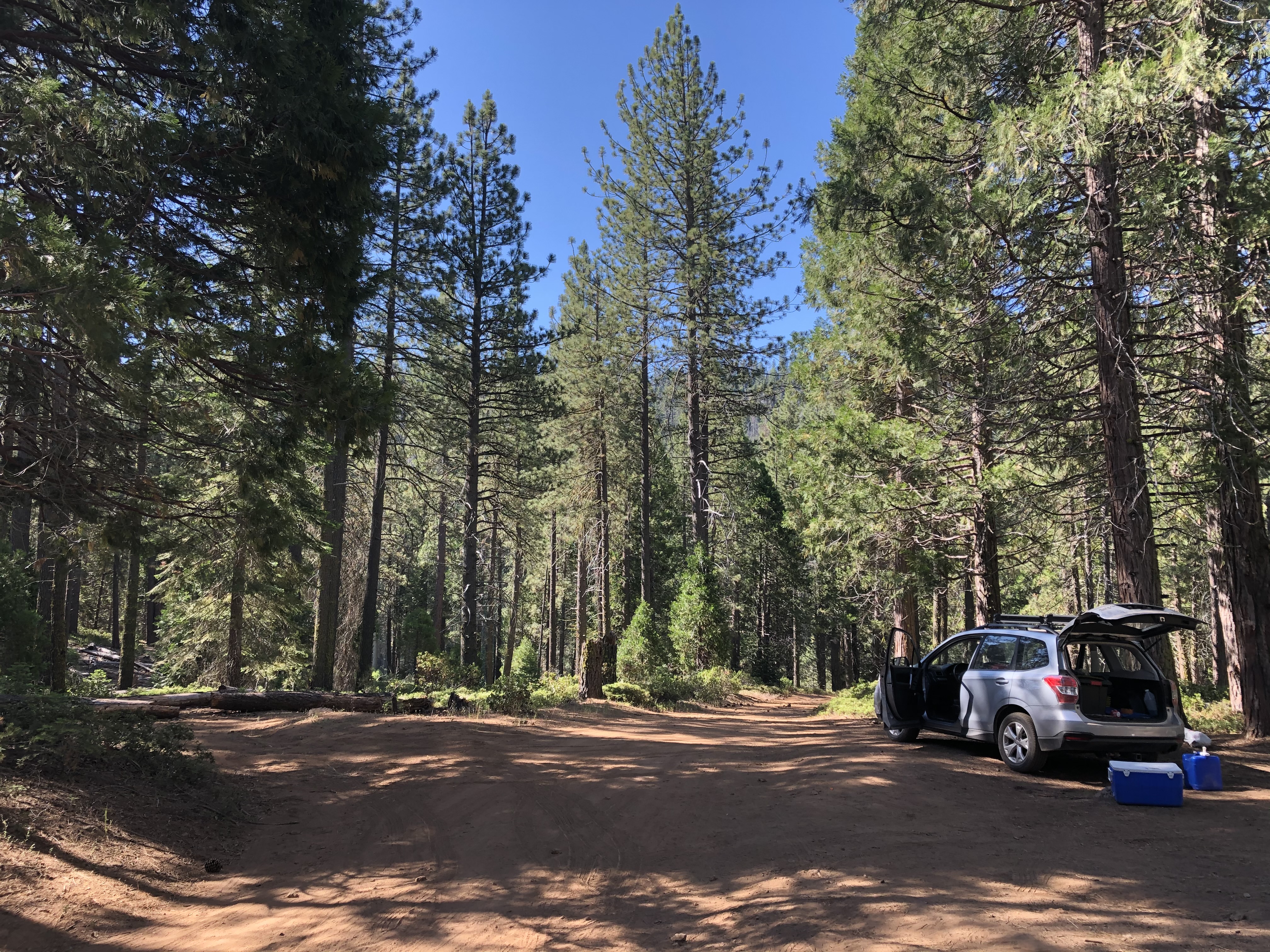
When You Are Getting Ready To Sleep
It’s your first night camping solo. There are some important steps to take to make sure you are safe and prepared for a good nights sleep.
- Keep all food and scented items out of your tent. Whether you put them in your car, in a bear canister, or hanging in a tree in a bear sac, make sure you do it. This includes things like deodorant or even scented lip balm. Most wild animals want nothing to do with you. But poor food practices while camping have unfortunately habituated some animals to seeking out human food. This is bad for everyone involved. Put away food and scented items.
- If needed (or if it makes you feel safe), bring your camping knife or bear spray into the tent. Nothing wrong with that.
- If you drove, have your car keys nearby in your tent. Sometimes your tents have pockets which are useful. I honestly put mine in my shoe, along with my phone, wallet, etc. You won’t forget it’s there, and it’s not going anywhere.
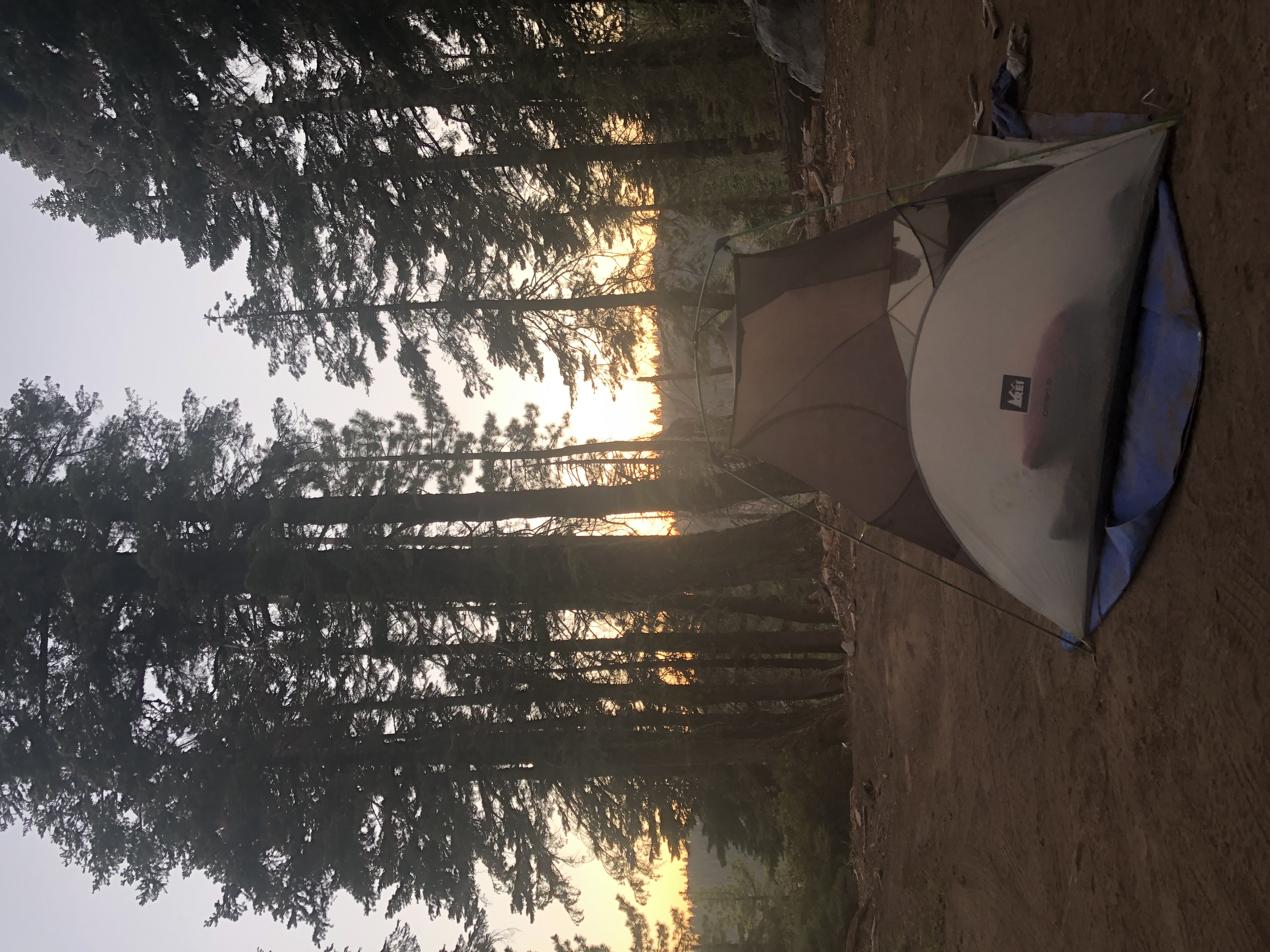
What To Do When You Get Scared Camping Alone
First, you should freak out. Ok, just kidding. Don’t do that. We will not entertain the idea of something actually terrifying happening. And you should definitely not go into a solo camping trip thinking anything bad will happen. But the best thing to do is realize all the “scariness” that comes with camping is totally manageable and predictable.
When camping…you will hear things in the middle of the night. Maybe the leaves and trees rustling in the wind. The babbling of the creeks or rivers. The symphony of birds, bugs and frogs. The stomping around and grunting of cattle. The howling of coyotes and wolves. And all the nocturnal wildlife. The little mice and bugs scurrying around brushing against your tarp or tent. It’s alright, they are doing what they do. There is virtually nothing out there that wants anything to do with you. But you will sense their presence, and that’s just fine.
If anything, your presence out there is really the only abnormal thing. At least relative to the rest of the natural world. But you’re on this journey to normalize that. To be more connected to nature. To understand this is where you started as a human in the first place. In the wild. It’s still in your blood. It’s still ingrained in your frontal lobes. Once you realize that the panicked thoughts and increased heartrate is just your brains’ way of trying to keep you safe, you can relax more.
Take a deep breath. Remember you’re not really camping alone. You’ve got your wild relatives with you.

Practice These Guidelines When Camping Alone
- Again, tell people where you’re going, and when.
- Practice the Leave No Trace principles
- Camp at least 100 feet away from any trail or water source.
- Do not bring any food, or smelly items in your tent. Including toothpaste and deodorant. This is important anywhere you camp, but critical in some places like bear country. Don’t take the chance. Leave your tent food and scent free.
- Be mindful and respectful of other campers and their experience. People are their to enjoy the sounds and beauty of the natural landscape just like you. Do not be loud or obnoxious. This also means not playing music. If you must…where headphones. Playing music can be disruptive to other campers, as well as animals who are seeking shelter, food, or migrating around the area. Don’t be that person.
Camping itself inherently has an impact on these places, but these guidelines help to minimize that. It doesn’t just help the campground, but it helps the public lands they’re on, which do affect almost everyone. For more information on why these and other guidelines are critical to practice, please read our article on Why America’s Public Lands Are Important.
Magna Terra Top Tips For Camping Alone
- Go early. Don’t waste time. Then, you can enjoy the hard work you’ve put in and relax. It’s not nearly as fun or rewarding if you have to sleep as soon as you set up camp in the dark. Go early and take the time to enjoy the space.
- Try to sit still in one area for a solid 30 minutes or more. Observe the wild. There’s a good chance you’ll see something incredible. Or have some insightful thoughts. Just be still. It’s harder than you think, but it’s a good practice to get comfortable being with yourself.
- Go for more than one night. Of course, do not feel obligated to stay any longer than you feel comfortable. But you’ll find that after a few days you become way more comfortable with being alone. You become more resourceful with your time. If you can, stay for at least two nights, or even three. It allows for a whole different experience which will greatly benefit you.
- It was recommended earlier, but bring a good book to read, or a journal to jot down your thoughts.
Final Thoughts On Camping Alone
Are you still thinking of whether you should camp alone? Try it out. It is a unique experience in life that few people actually choose to do. It’s also an incredible way to explore America’s 640 million acres of public lands.
Maybe this ends up being one of your favorite camping experiences, and solo camping becomes a regular new challenge for you.
If it turns out you hate camping alone and you prefer camping with friends, then that’s just as well.
If you realize that you hate camping altogether, now you know.
If nothing else, you’ll have a great story for another night.
Enjoy the journey – J. Wasko
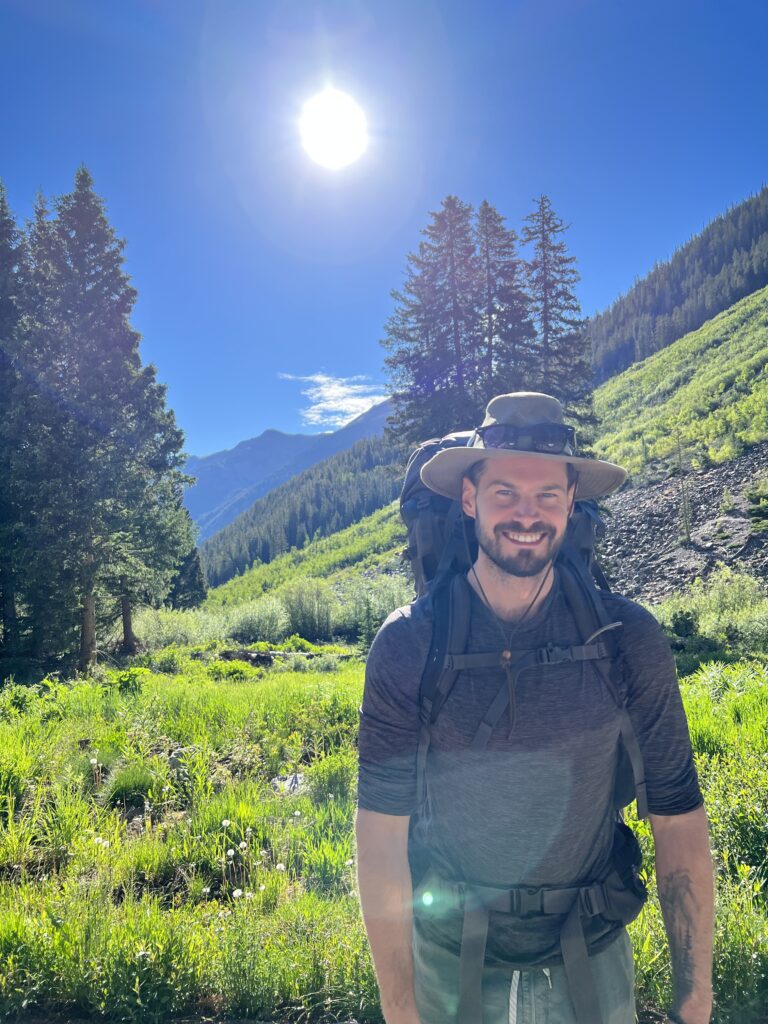
About the author
Jeremy Wasko has been exploring our public lands for over two decades. With thousands of miles and hundreds of camping trips completed. Through his adventures, he discovered that our public lands are more than just places to camp and recreate. They are cultural and historical sites, sacred places to different peoples, and the very sources of our clean water, air, and other critical resources.
He created Magna Terra to share his knowledge on how to explore and enjoy our public lands, and also how to protect and conserve them for future generations.
Learn more about Jeremy and the founding of Magna Terra here.
